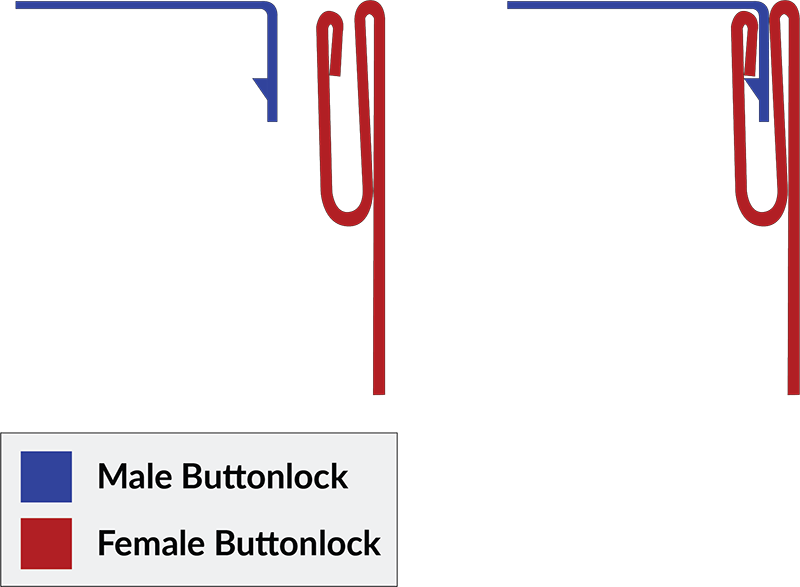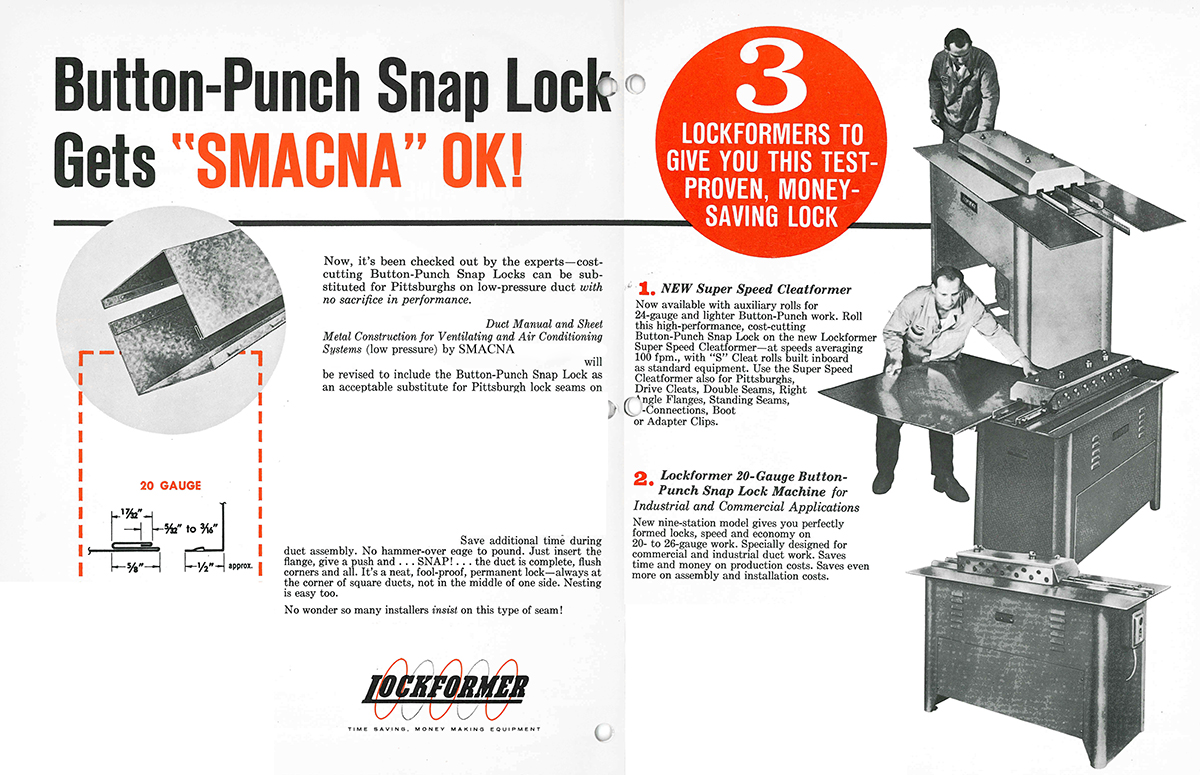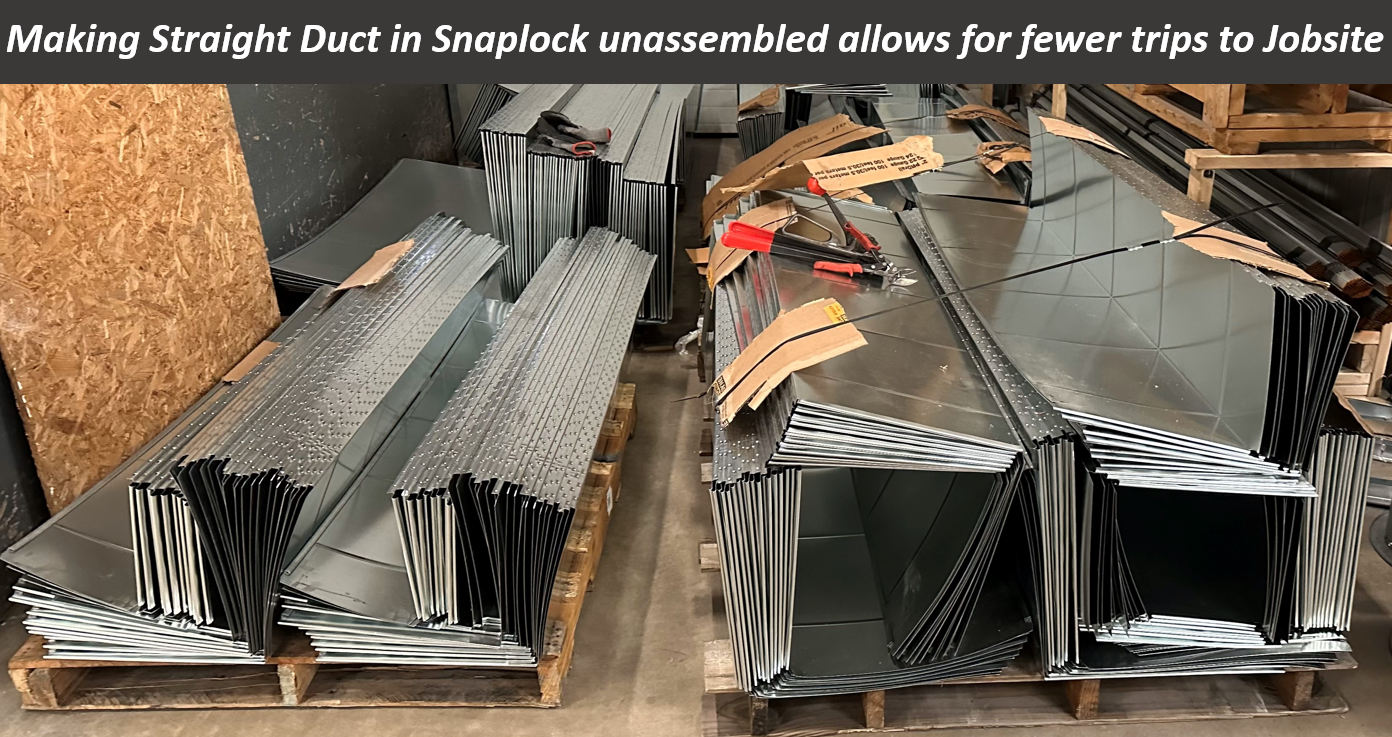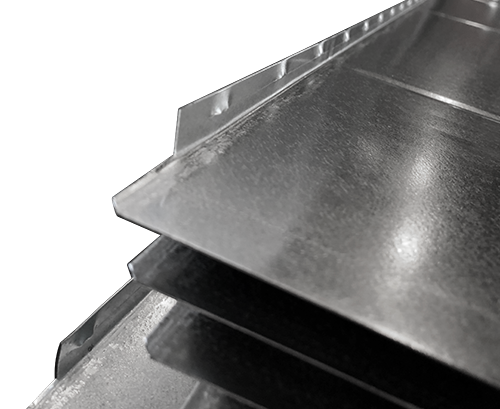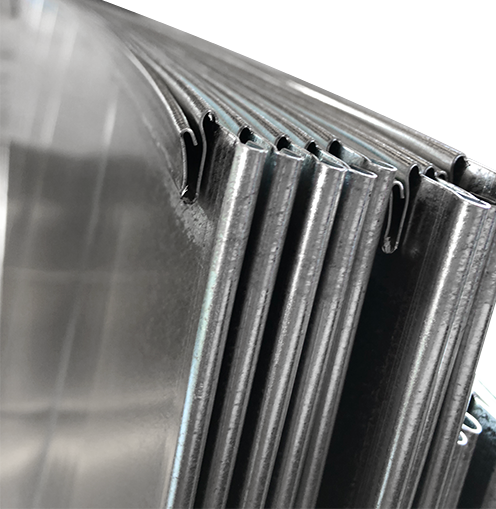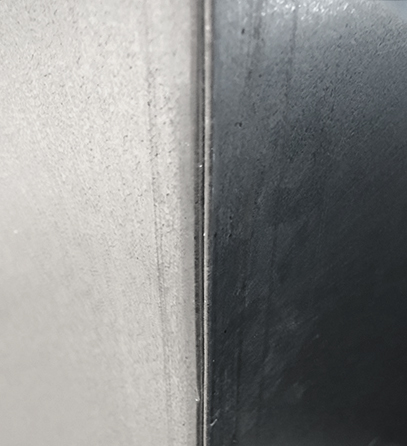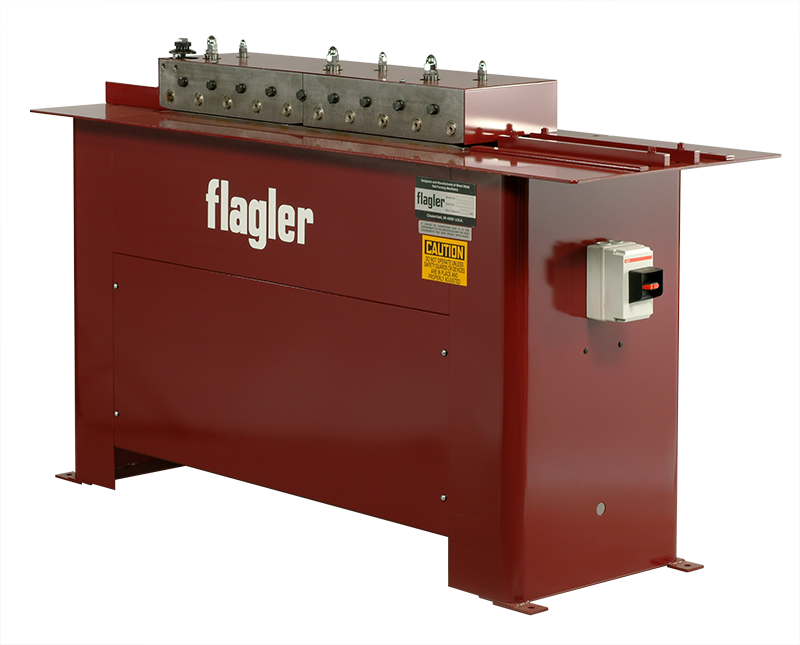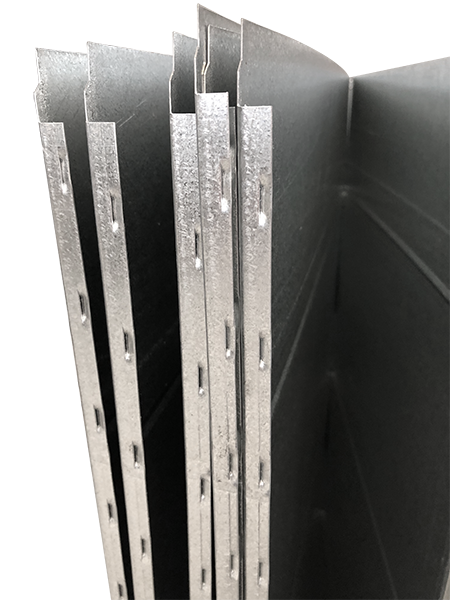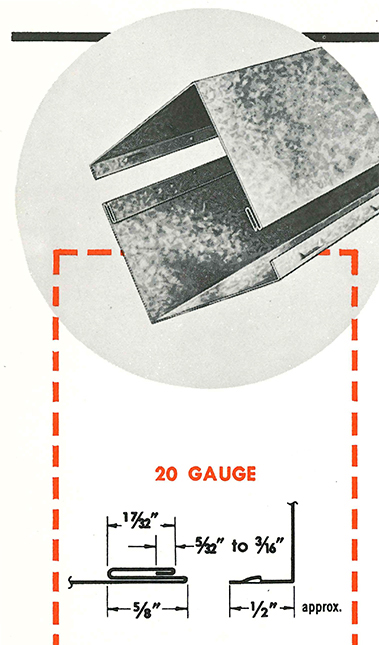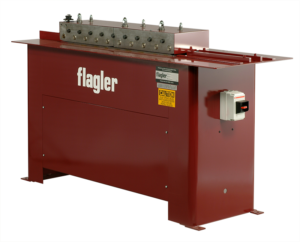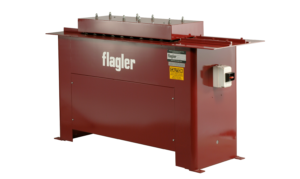The savings of Buttonlock in place of Pittsburgh on Low Pressure Rectangular Duct
Snaplock Buttonpunch on Rectangular Duct is making a comeback! Even though Snaplock has been a SMACNA standard for the Longitudinal Seam on Low Pressure Duct since 1969, many shops left it behind in favor one method- Pittsburgh-that covers all duct pressure classes, thereby streamlining their operation with one method on the longitudinal seam as well as saving money and floorspace from having to buy another machine. Buttonlock and Pittsburgh are run on separate machines. The Buttonlock Machine is set up to run the Female Seam “inboard” and the male dimpled Right Angle Flange on the outboard side. It’s a similar operation to the Pittsburgh Lock which has a Female Seam “inboard” and a Right Angle Flange known as the Male Pittsburgh on the other side.
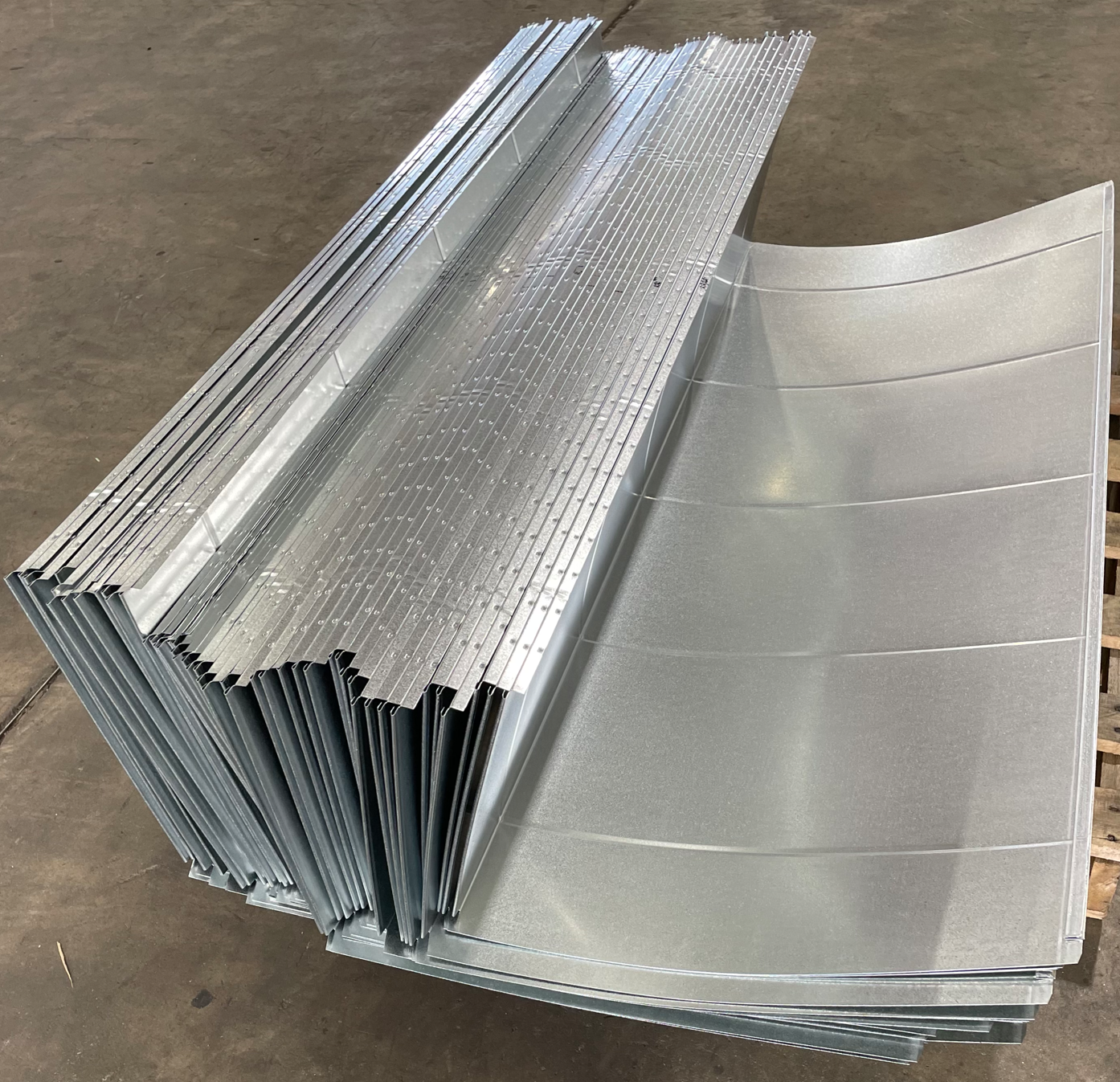
- Buttonlock can cut assembly time in half vs what’s required in assembling Pittsburgh duct. Fabricated and sent out to job site in 2 piece / L sections “nested” like this below, cutting transportation expenses to job site significantly.
The Buttonlock is SMACNA approved for Low Pressure duct (2” wg and below) and then the stronger Pittsburgh Lock is required for 3” (Medium Pressure) and up.
For Rectangular Duct, what percentage of Snaplock vs. Pittsburgh are you using on the straight duct?
If 25% or more of a shop’s jobs are low pressure duct (2″ water gauge), the $14,000 investment towards a freestanding Buttonlock machine may be worth the savings that shop would then get in labor both in the shop and in the field. For someone in the field, the option of being able to simply “snap-in” the longitudinal seam would be chosen 100% of the time.
This machine runs a female receiver lock inboard and the male button-punched right angle flange outboard. The inboard female operation is fixed, however the male rolls on the outboard side can be removed and added to another 8 station Rollformer for a crossover setup.


